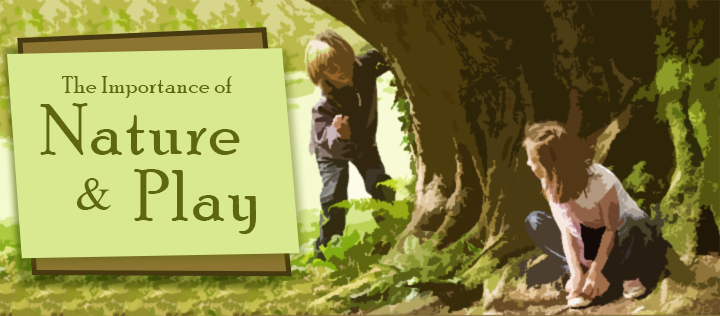The Importance of Nature and Play

What are your favorite childhood memories when your parents told you, “Go outside and play”? Do you remember wandering the woods with a sibling? Did you concoct mud pie recipes in the backyard after a rainy day? Maybe you had a gang of neighborhood friends that roamed the streets on bikes and scooters.
Most adults would typically use these types of outdoor activities to define a traditional childhood. However, that definition is changing as technology plays an increasingly significant role in the development of today’s youth. Whereas previous generations looked forward to recess, children now consider computer time a valuable privilege both at school and at home. Today’s children know how to operate relatively new technology, like smartphones, oftentimes before they even learn to read.
Nature and Development
Measurable benefits—in terms of health and cognitive development—for children who are encouraged to exercise, explore, and play outside include:
- Improved eyesight and vision for children, according to a report from the American Academy of Optometry. Children who play outside more frequently exhibit better long-distance vision than children who predominantly play indoors.
- Reduced stress and anxiety. A number of medical studies show improved attention span, focus, and relaxation skills in children who receive ample opportunity to play outside.
- Enhanced social development because natural play settings, such as school gardens or a park, are more inclusive for diverse populations of students.
- Increased Vitamin D in children who engage in outdoor play. Sunlight does not provide Vitamin D but rather supports the process that converts it inside the body for better health.
Why Do Parks and Playgrounds Matter?
In the 1980's and 1990's, the Federal School Admission emphasized technological preparation of children. The mainstream education system now focuses on the use of technology including laptops, tablets, and scientific equipment. Learning and (unfortunately) recreation have gone digital, due to America’s efforts to keep pace with advanced countries around the world. Preparing students to be critical thinkers and technological super-users have trumped the importance of children’s connection to the natural world.
At the same time, as students began spending more screen time and less time in outdoor settings, problematic changes began to occur for American children. These changes often include higher instances of obesity, anxiety, antisocial behaviors and stress. While America's children may be getting smarter, they are not necessarily getting healthier. In fact, they are displaying more and more negative consequences as a result of increased screen time and reduced outdoor play.
Clinical research has shown that trees and natural landscaping in high-density urban areas can dramatically improve the overall mental health and wellness of children and adults alike. Outdoor play inspires the development of strong social relationships and teaches children to share and collaborate with others. Some studies have also indicated that learning outside in a natural, green setting can enhance learning outcomes for students.
Time spent outside engaged in exploration and play is not a luxury, it’s a necessity for healthy development.
The Renaissance of the Community Park
At All People Can Play, we can assist your organization in designing a high-quality outdoor recreational environment. We are encouraged by the increased enthusiasm and the growing trend to re-invest in natural playscapes.
We know firsthand that parks and playgrounds create, support, and revitalize communities. Contact us for advice and services that will help you design a place for kids to grow.


